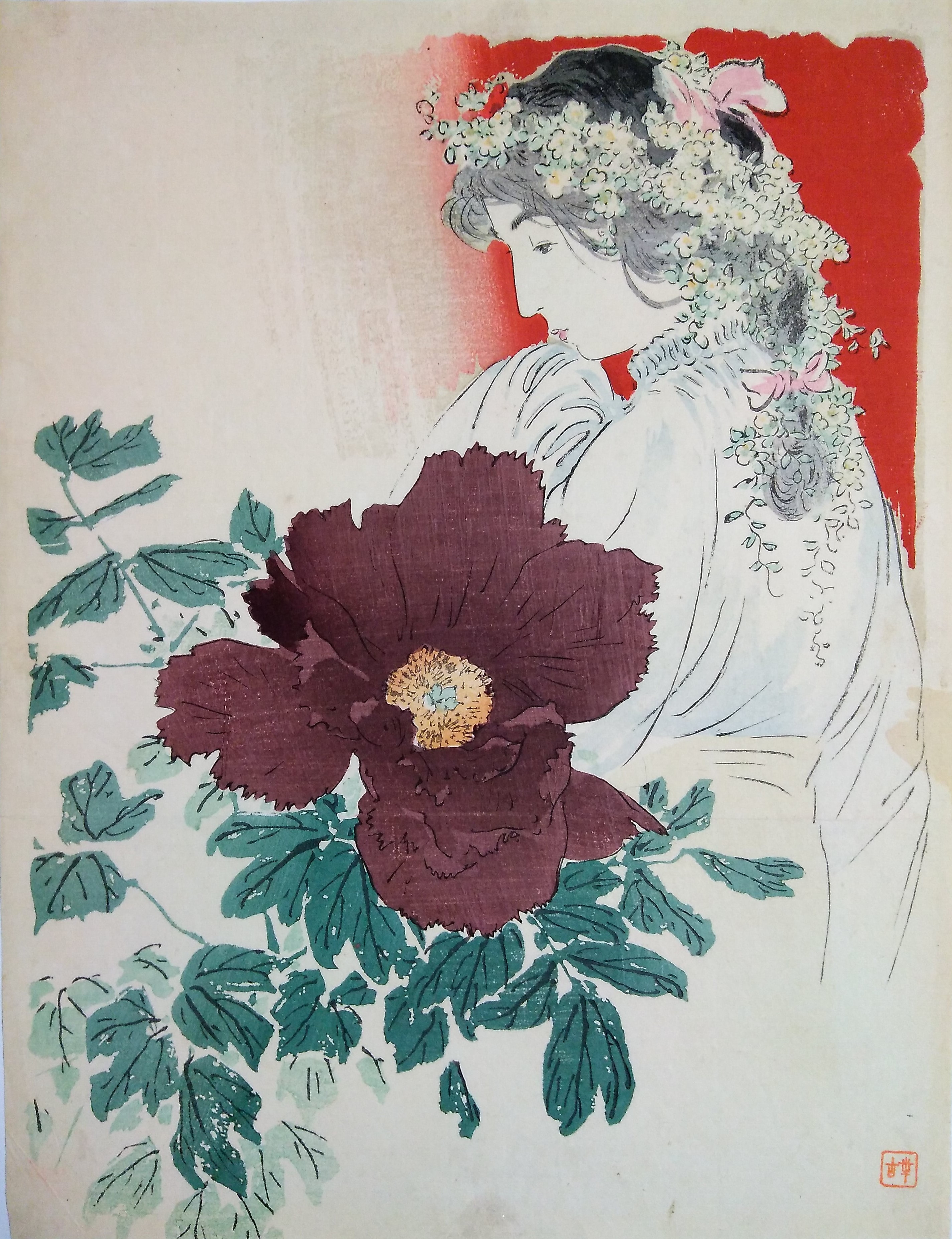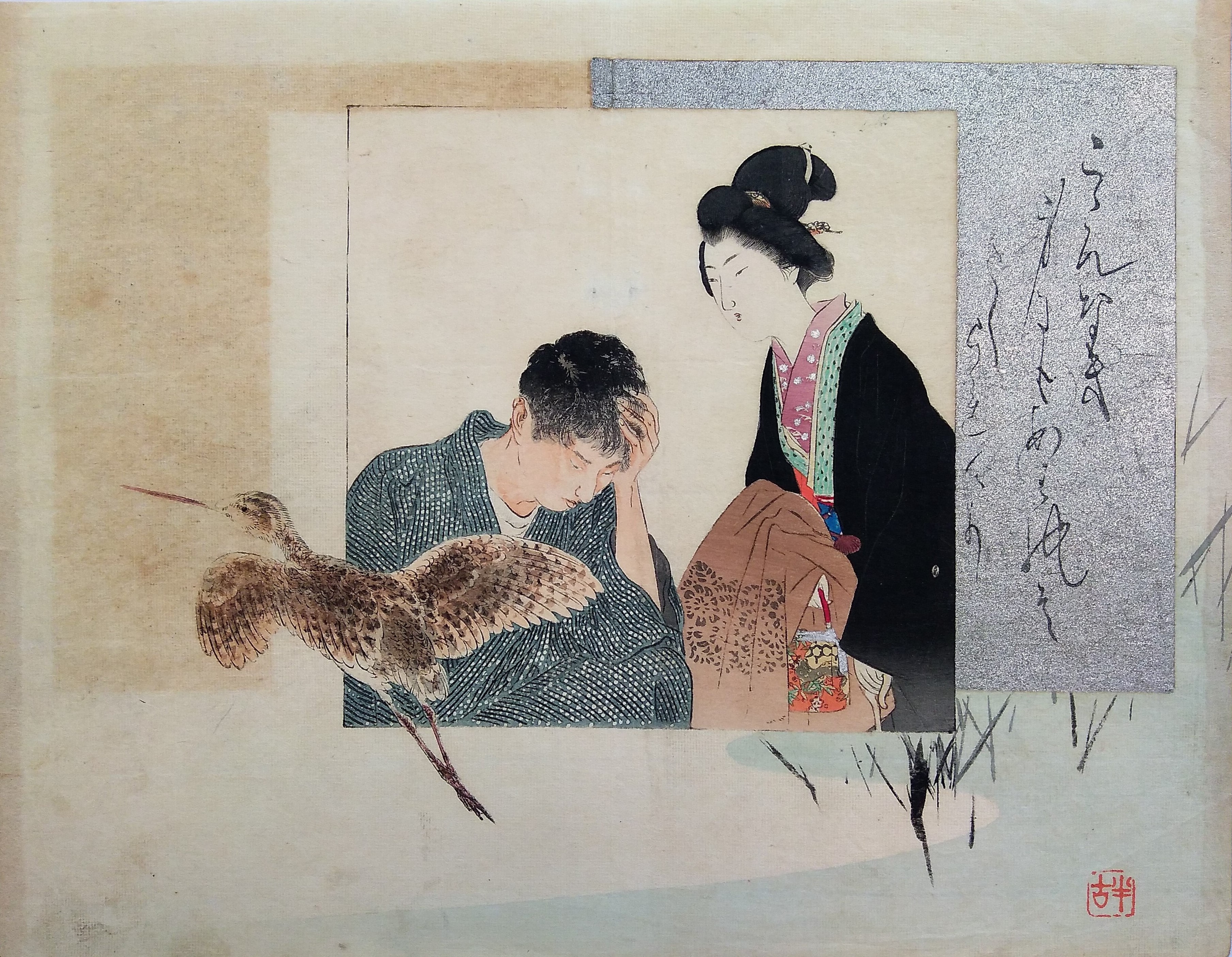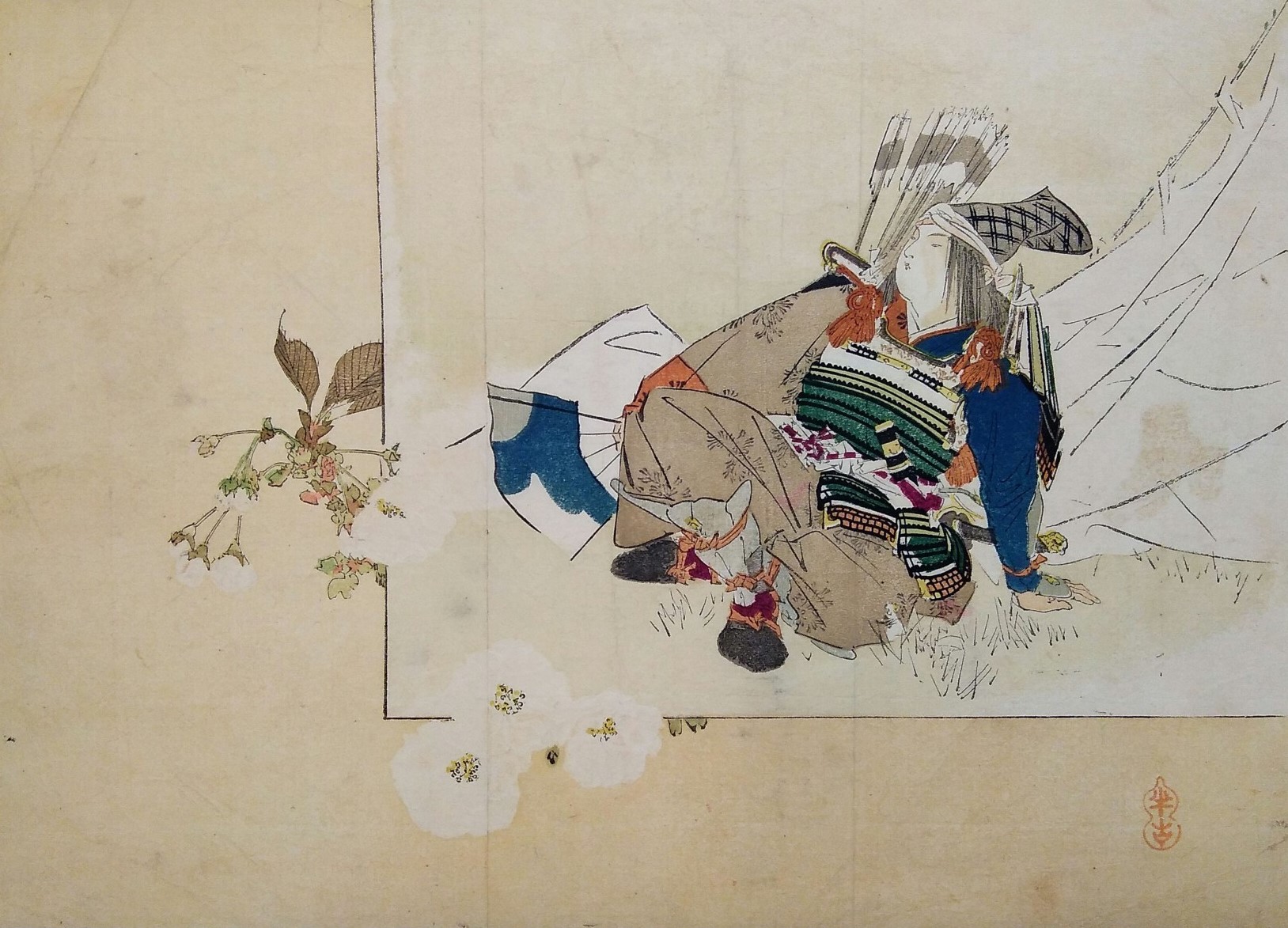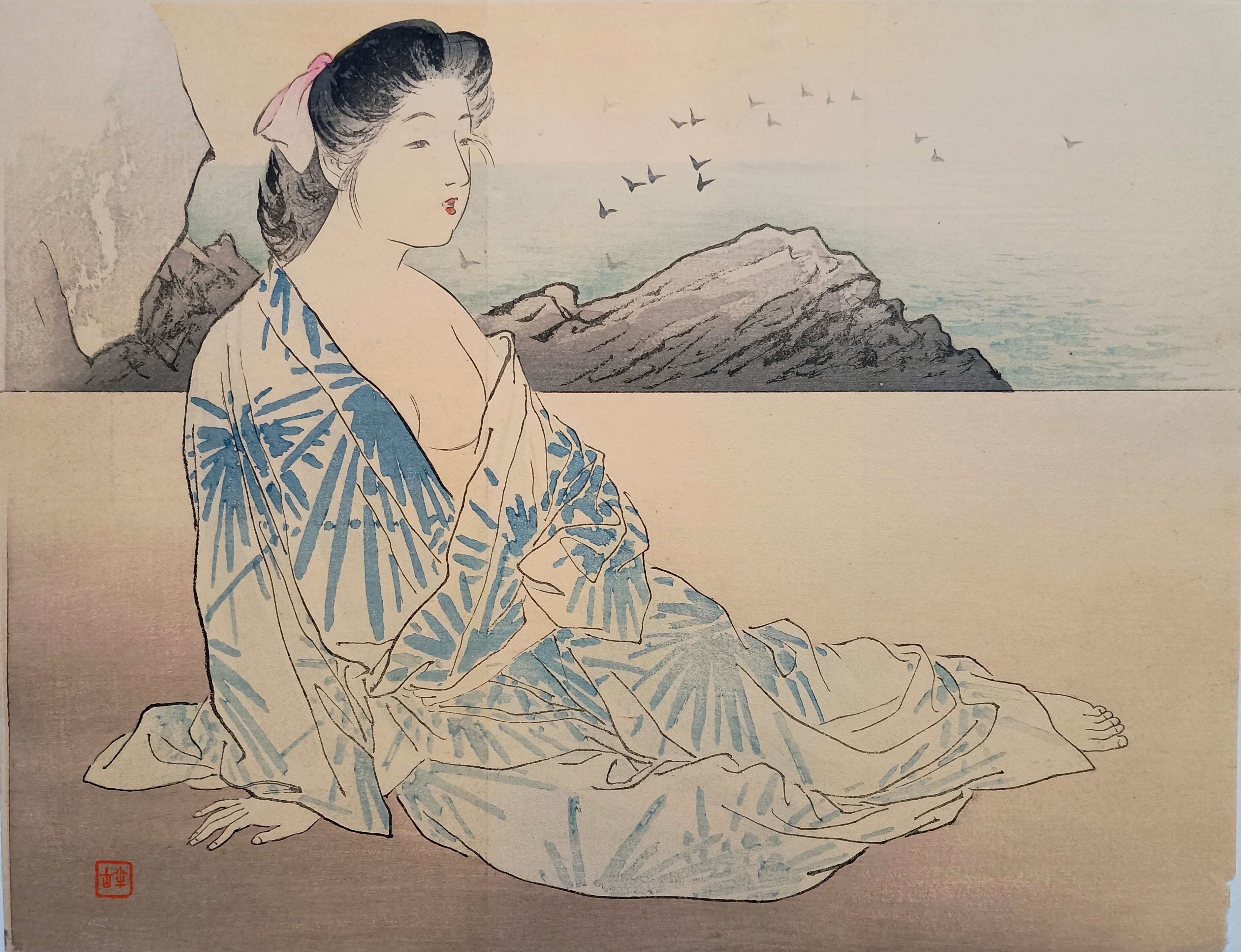Kajita Hanko
1870 ~ 1917Kajita Hanko, born in 1870 as Jojiro Kajita, was a Japanese artist known for transitioning from classic ukiyo-e to modern Japanese prints and illustrations for widely distributed novels and magazines.
The son of a renowned metal engraver from Tōkyō, he began studying Shijō painting with Gyokuei Nabeta, from whom he received the name "Gyokushū." After an interruption due to an eye infection, he resumed his studies under
the Nanga painter, Kenkō Ishii.
During his career, Hanko specialized in Nihon-ga (Japanese painting) and woodblock prints, but he is best known for his illustrations and kuchi-e (frontispieces) for novels and magazines.
In 1898, he became the vice-principal of the Toyama Prefectural School of Arts and Crafts in Takaoka, but he left the position less than a year later to return to Tōkyō, where he founded a private art school and continued to
work as an illustrator for the Yomiuri Shinbun.
Hanko gained fame as an illustrator through his work on the novel series "Demon of Gold" between 1900 and 1901 and later with his woodblock printed and lithographic images for the novel "Evil Wind, Love Wind" in 1902, which captured
a wide audience. He died at the age of 47 from tuberculosis. Today, his works are found in prestigious collections such as the Victoria & Albert Museum and the British Museum.
 Not for Sale
Not for Sale
This print is an exquisite example of the kachō (flowers and birds) genre. It features a charming woman dressed in western attire, standing with her back turned towards a prominently displayed, fully blossomed peony in the foreground.
 Not for Sale
Not for Sale
The man in the print is Murai Gensai, a Japanese novelist whose Hi no Dejima series featured Hanko`s print as a frontispiece.
In his youth, Murai was expected to join the Russian Studies Department at the Foreign Language Institute of Tōkyō, but due to illness, he moved to the United States.
After returning to Japan, he began working as a novelist for several newspapers, gaining fame with his novel Shokurakudō.
 Not for Sale
Not for Sale
A print depicting a young warrior, likely Minamoto no Yoshitsune, in a moment of rest.
Born in 1159, Yoshitsune was the son of Minamoto no Yoshitomo, leader of the Minamoto clan, and Tokiwa Gozen. His youth was marked by conflict as the Minamoto clan sought to assert its power during the Heian period.
After losing his father and two brothers in the "Heiji Rebellion" (Heiji no ran), Yoshitsune had to flee the capital and took refuge in Kurama Temple, where he was initially educated to become a monk. However, driven by
the desire to become a samurai, he left the temple and his mother forever.
His skill with the sword became legendary, particularly after defeating the warrior monk Benkei in a duel, who then became his faithful servant. Yoshitsune is renowned for his key role during the Genpei War (Genpei gassen),
leading the Minamoto clan to victory against the Taira clan, thus consolidating the power of his half-brother Minamoto no Yoritomo.
After the war, despite being appointed governor of Iyo and receiving numerous titles from the cloistered Emperor Go-Shirakawa, his rise aroused suspicion in his brother Yoritomo, who nullified the conferred titles and hindered
Yoshitsune, leading to their estrangement. This fraternal conflict culminated in a manhunt for Yoshitsune, who had to flee to save himself and, ultimately, betrayed by an ally, was forced to commit seppuku in 1189.
Yoshitsune`s life has been immortalized in numerous literary works, including the classic "Heike Monogatari", and has given rise to the term "Hōgan-biiki" (sympathy for the tragic hero), deriving from the title "Kurō Hōgan" conferred
on him by the imperial court. His heroic figure is often represented as a symbol of military virtue and courage, but also of a certain naivety and tragedy due to his premature end.

